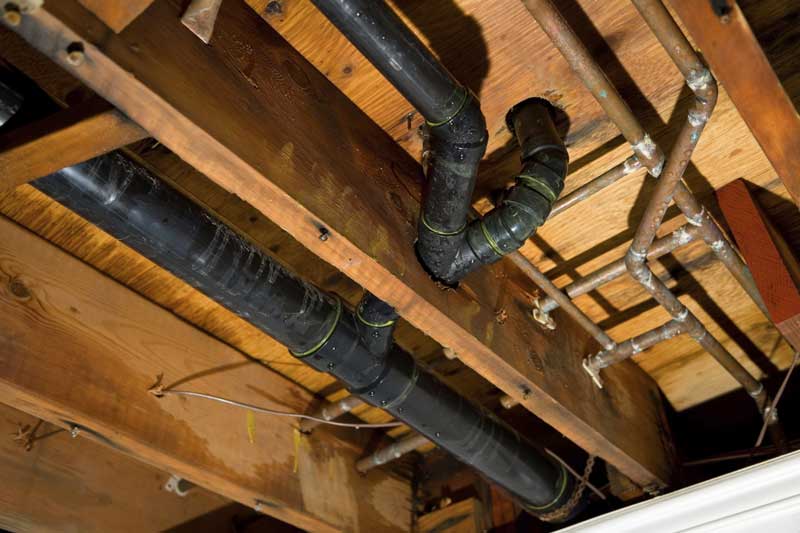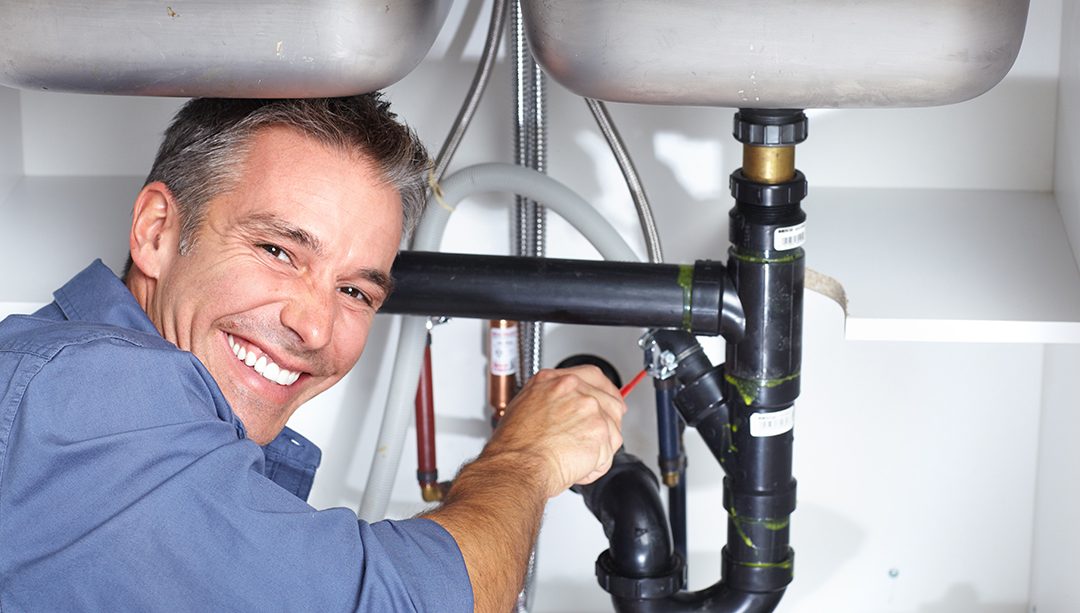Tips for Resolving Plumbing Challenges in Older Homes
Tips for Resolving Plumbing Challenges in Older Homes
Blog Article
Just how do you really feel in regards to Main Plumbing Issues Found in Old Houses?

Older homes frequently come with appeal, personality, and history, however they can also bring a host of pipes concerns. Whether you're taking care of aging pipes, low water stress, or leaks, recognizing exactly how to address these common problems is vital to preserving a safe and practical home. In this guide, we'll explore the typical pipes challenges encountered by older homes and provide practical remedies to keep your pipes in leading shape.
Recognizing Usual Plumbing Issues
Aging Pipelines
Among the most typical concerns in older homes is aging pipelines. Depending on the age in which your home was constructed, the pipes might be made from products that have actually deteriorated with time, such as galvanized steel, cast iron, or even lead. These products can wear away, end up being breakable, or develop leaks, leading to water damage and potential carcinogen.
Water Quality Testing
Older pipes can influence the high quality of your water. Conduct a water quality test to look for pollutants such as lead, corrosion, or various other impurities that may be introduced by aging pipelines.
Solutions for Common Pipes Problems
Replacing Aging Pipelines
If your home has old, degrading pipes, take into consideration replacing them with contemporary products like copper or PEX. This can be a significant investment, yet it will certainly prevent future issues and enhance the safety and security and dependability of your pipes system.
Dealing With Low Tide Stress
To fix low water pressure, beginning by cleaning or replacing old fixtures and removing mineral accumulation in the pipes. If the issue persists, it may be required to replace sections of corroded pipes.
Fixing and Changing Dripping Pipes
For little leaks, you can utilize pipeline clamps or epoxy putty as a short-lived solution. Nevertheless, it's ideal to change dripping pipelines totally to stay clear of more damages.
Upgrading Components
Updating old components to modern-day, water-efficient versions can boost your home's plumbing performance and reduce water intake. Search for fixtures with the WaterSense tag for the best effectiveness.
Handling Pipe Rust
If your pipelines are corroded, changing them with corrosion-resistant products like copper, PVC, or PEX is the most effective option. Routine assessments and water high quality maintenance can assist protect against even more rust.
Low Tide Pressure
If you're experiencing low water pressure, it could be because of natural resources, rust inside the pipelines, or old fixtures that are no longer functioning efficiently. This can be a major inconvenience, specifically in locations like showers and sinks.
Leaking Pipes
Leakages are one more regular problem in older homes, typically caused by rusty or damaged pipes. Also tiny leakages can result in significant water damages, mold and mildew growth, and raised water costs if not addressed without delay.
Obsolete Fixtures
Obsolete plumbing components such as taps, bathrooms, and showerheads not only look old but might also be much less effective, prone to leaks, or inappropriate with contemporary pipes requirements.
Pipeline Rust
Corrosion is an usual trouble in older pipes, specifically those made from galvanized steel or cast iron. Rusty pipes can limit water flow, cause staining, and eventually cause leaks or pipeline ruptureds.
Examining the Problem of Your Pipes
Inspecting Noticeable Pipelines
Start by evaluating any noticeable pipelines in your home, such as those in cellars, crawl spaces, or under sinks. Try to find signs of rust, leakages, or rust, which can suggest underlying concerns.
Checking for Leakages
Look for leakages by checking locations around taps, bathrooms, and under sinks. You can also monitor your water meter prior to and after a duration of no water utilize to spot surprise leakages.
When to Call a Specialist
While some plumbing problems can be managed with do it yourself options, there are times when it's best to call in an expert. If you're managing major leaks, comprehensive corrosion, or are unsure about the condition of your pipelines, a qualified plumbing can supply experienced analysis and repair service.
Preventive Upkeep Tips
Normal Inspections
Frequently evaluate your pipes system for signs of deterioration. Capturing concerns early can protect against costly repair work down the line.
Water Pressure Policy
Ensure your water stress is within the suggested variety to prevent worrying your pipes and fixtures. A plumber can install a stress regulatory authority if required.
Water Top Quality Upkeep
Mount water filters or conditioners if your water quality is poor. This can protect your pipes and components from damages brought on by tough water or impurities.
Aggressive Pipeline Substitute
If your home has older pipes, think about proactive replacement prior to major concerns emerge. This can conserve you from emergency situation repair work and water damage.
Conclusion
Dealing with plumbing concerns in older homes calls for a combination of watchfulness, preventive upkeep, and prompt upgrades. By comprehending the typical difficulties and knowing when to look for expert assistance, you can ensure your pipes system stays practical and trustworthy for many years to come.
Common Plumbing Issues in Older Homes and How to Fix Them
Owning an older home in Australia comes with its unique charm and a set of challenges, especially when it comes to plumbing. The Sunshine Coast has many older properties that can harbour plumbing problems that aren t just inconvenient but potentially costly. Here s a look at some common plumbing issues in older homes and expert advice on how to handle them.
Outdated Piping Materials
Many older homes were built with galvanised steel, cast iron, or even lead pipes, materials that are far from ideal by today s standards. Galvanised pipes are prone to corrosion and clogging, while lead pipes pose serious health risks.
How to Fix:
Replacing old pipes is a job for a professional. Upgrading to copper or PVC piping not only enhances water quality and flow but also increases the property s safety and value. If you suspect your home has outdated materials, a licensed plumber can conduct a thorough inspection and recommend the best course of action.
Corrosion and Pipe Degradation
Over time, exposure to water and minerals can cause pipes to corrode, leading to leaks, bursts, and water contamination. Corrosion is especially common in homes over 50 years old.
How to Fix:
Regular inspections can catch early signs of corrosion. If corrosion is found, the affected section of piping often needs to be replaced. For homes with extensive corrosion, a complete plumbing overhaul might be necessary. It s crucial to consult with a plumbing expert to understand the extent of the issue.
Tree Root Intrusion
Older neighbourhoods usually have mature trees whose roots can intrude into pipe lines, causing blockages or damage. This is particularly problematic for sewer lines, where roots seek out water sources.
How to Fix:
A plumber can use a specialised camera to inspect sewer lines for root intrusion. If roots are a problem, methods like root cutting or hydro-jetting can clear the obstruction. In severe cases, part of the pipe may need replacing. Consider root barriers around the piping to prevent future issues.
Inadequate Water Pressure
Low water pressure in older homes can be due to various factors, including corroded water lines, sediment build-up in pipes, or outdated fixtures.
How to Fix:
First, check if the low pressure is isolated to one area or throughout the house. Replacing old fixtures can sometimes resolve the issue. However, if the problem is more widespread, it might be due to sediment or corrosion. Flushing the system or replacing the affected pipes usually restores normal pressure. Again, a professional assessment is advisable.
Outdated Fixtures
Older homes often feature fixtures that are not only visually dated but functionally inefficient. This includes everything from toilets and taps to showerheads and washing machine hoses.
How to Fix:
Updating these fixtures can improve both water efficiency and the aesthetic appeal of your home. Modern fixtures are designed to conserve water, which can significantly reduce your water bill and lessen your environmental impact.
Conclusion
Maintaining the plumbing in an older home requires a proactive approach. Regular checks and updates are key to preserving these beautiful properties. If you re facing plumbing issues in your older home, it s best to call on experienced professionals like Green & Gold Plumbing & Gas. With the right expertise, even the most daunting plumbing problems can be resolved, ensuring that your home s character is maintained while its functionality is enhanced.
https://gandgplumbing.com.au/common-plumbing-issues-in-older-homes-and-how-to-fix-them/

Do you really like more info about Plumbing Issues in Older Properties and How to Fix Them? Post a comment further down. We'd be glad to find out your opinions about this article. Hoping that you come back again in the near future. Liked our piece of writing? Please quickly share it. Help somebody else check it out. Kudos for your time. Please come by our website back soon.
Call Today Report this page